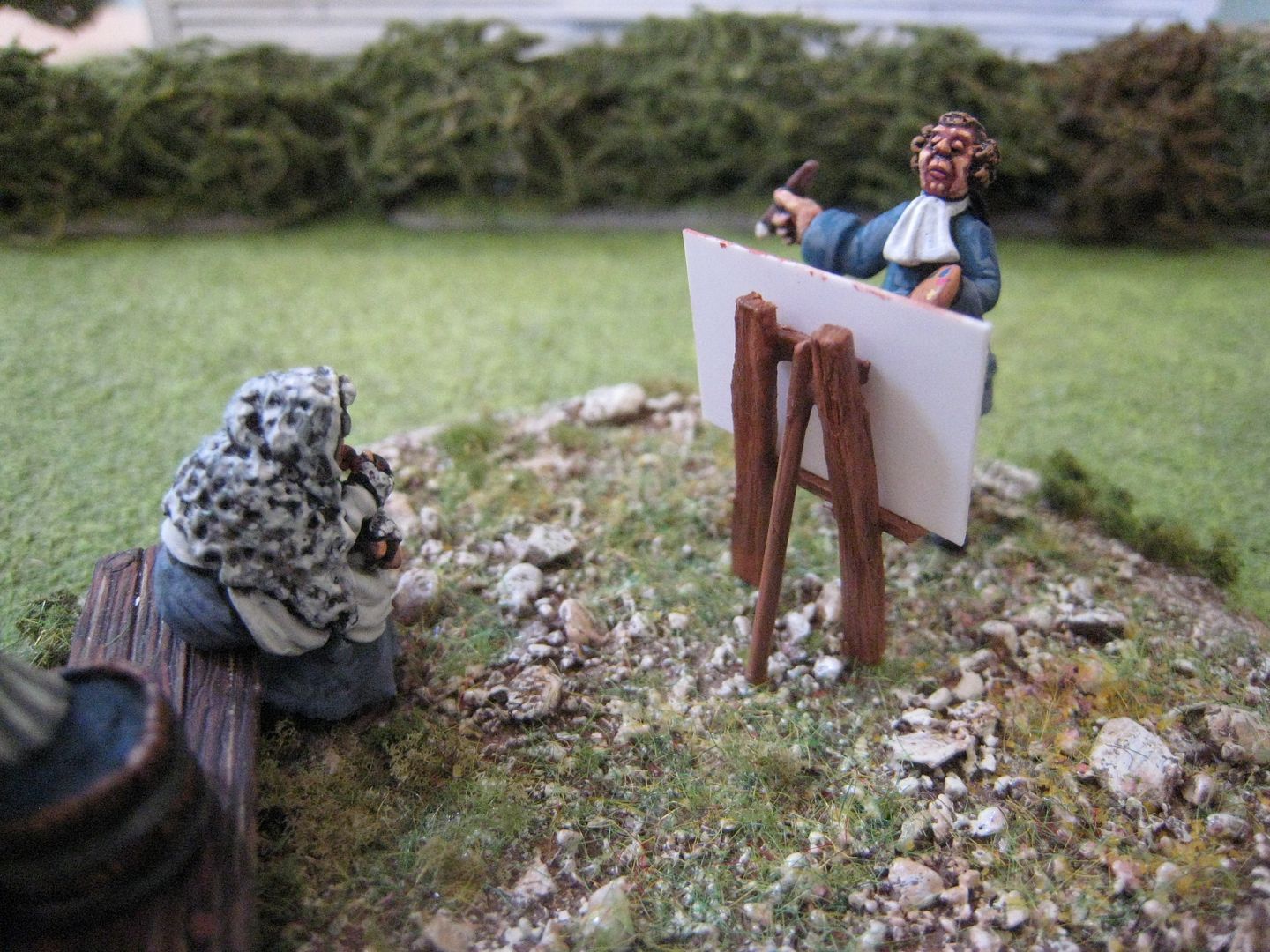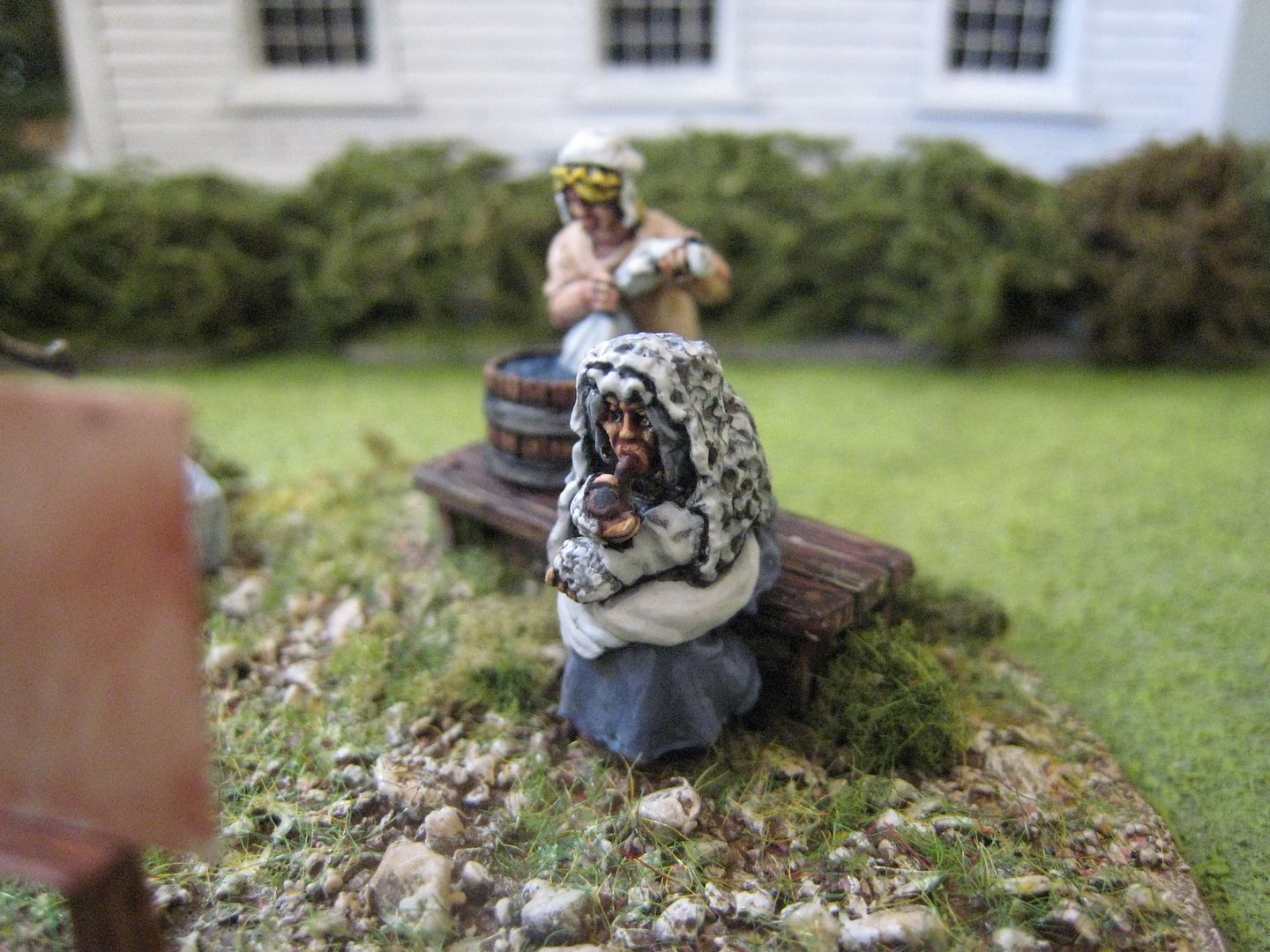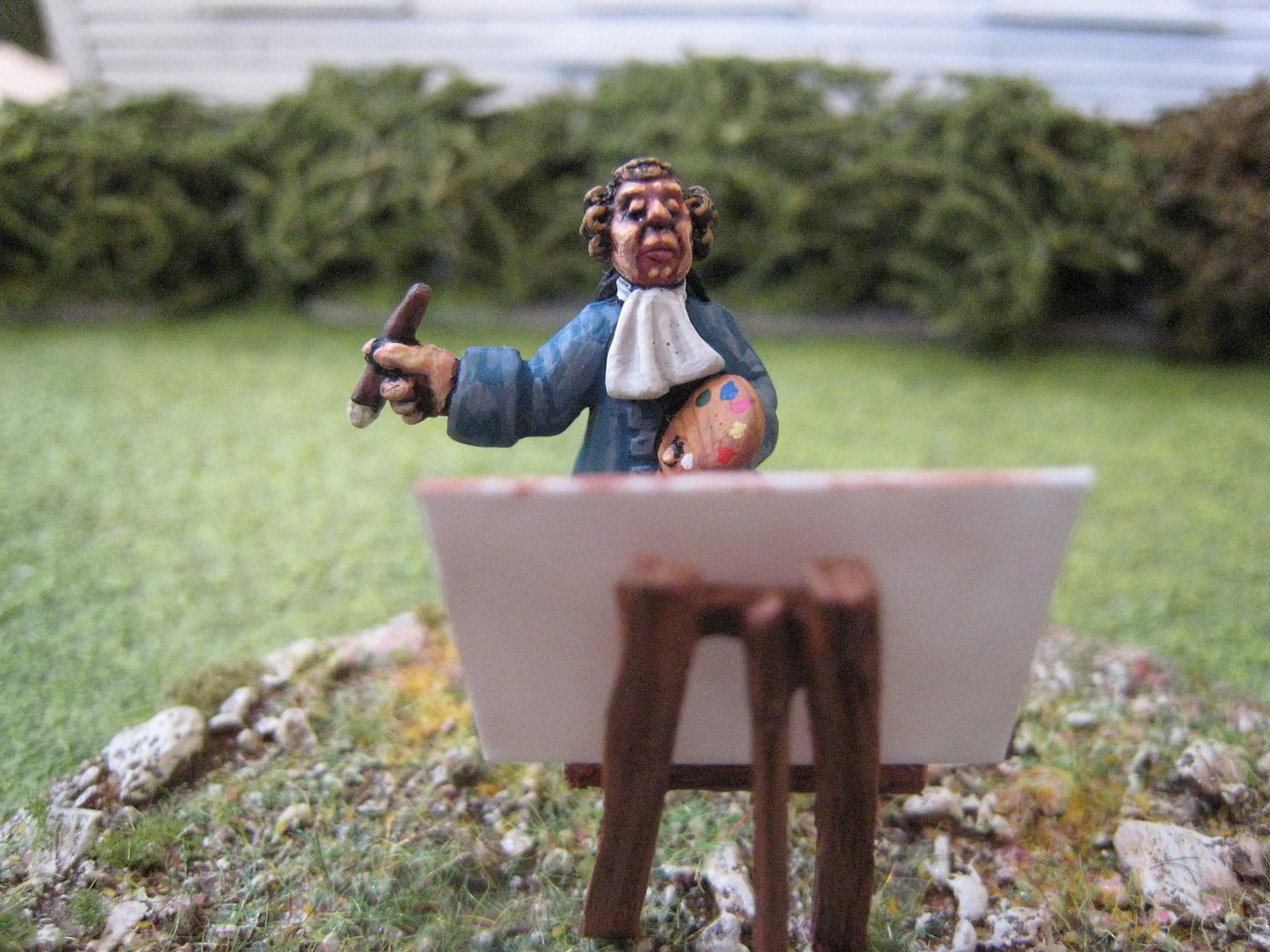As I find is often the case with "tricky" bits of modelling, the "difficult" bits didn't actually take long to finish. I painted the water trough with the Foundry "Stone" palette, and then gave it a final drybrush with an off-white (I forget which paint exactly, but it would have been a Coat d'Arms light grey). The easel I scratch-made from bits of matchsticks. I spent a bit of time searching the internet for pictures of mid/late 18th century easels to see what they would look like - not many seem to have survived, but there are quite a few paintings from the period which are themselves pictures of painting scenes. That said, easel design doesn't seem to have advanced all that much over the past 300 years. It probably the case, however, that the type of easel I made isn't the sort of thing that a painter would have taken out of the studio. Also, the painter in this scene is probably an amateur, as most established artists in the 1770s would have been concentrating on grand historical scenes or society portraits and wouldn't have wasted their time painted the local rustics. Anyway, the easel was a bit fiddly to do in the end, the hardest part being to carve out the ridge in which the painting sits. Once it was all glued together, I painted the easel with the Foundry "Chestnut" palette. Looking at these photos now, I realise that I should have added some gloss varnish to the water in the tough and the washer-woman's basket.
I arranged the figures in what seemed to me to be the most satisfying way, although I appreciate that it's not clear exactly what it is that the chap is painting. The picture itself is simply a bit of Gale Force 9 plasticard. I did think about trying to paint the scene into it, but discarded that idea after about 5 seconds. Rather than leave the "canvas" completely blank, I painted a "red ground" on it. Apparently red grounds are often used by landscape painters to prepare their canvases; I read that Constable favoured a sort of mid-brown colour and I tried to replicate that here. Making the scene look as if the artist is just about to start also meant I could put paints in the palette without smearing them around. I haven't glued the painting to the easel - so I could in theory have a go at painting something in the future.
4 figures, a water-trough and an easel. Painted July 2011-April 2013.





15 comments:
A wonderful vignette, Giles! The easel, palette, and water trough really make the scene come alive.
Best Regards,
Stokes
Greate vignette !!!
Best regards Michael
If you think that an easel I hard to make, try making a telescope mounted on a tripod. That has baffled me for a number of years for. Vignette of some engineering officers that I tried to make.
What a great vignette Giles!
Christopher
That is absolutely delightful Giles, bravo Sir.
Nicely done. Very creative.
Absolutely superb!
Excellent - love the look on the artists face...!
That's inspired!
I really love those pieces of information and historical references you put into your figures and the according blog posts. Something to aspire to.
Cheers, Tilman
www.mountainsoflead.com
I've hopped over from a TMP link to find some wonderful work. I can't emulate this at all (which is why my style is 'glossy toy soldier'. Thank you
Giles - can you turn off the ability for anonymous users to leave comments?? It's seriously disincentivising, as when I subscribe to follow up comments I get all the spam rather than my fellow bloggers words of wisdom...... :o)
Sorry Steve; I hadn't appreciated that those comments would show up on other sites. Hopefully all fixed now.
Thanks for your kind comments, chaps.
Bloody marvelous Giles - a lovely little miniature work of art!
Really nice little piece Giles!
Great looking vignette, I really enjoy this kind of work!!
Phil.
Post a Comment